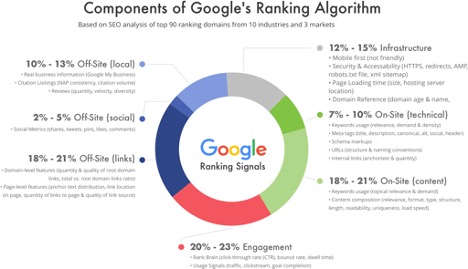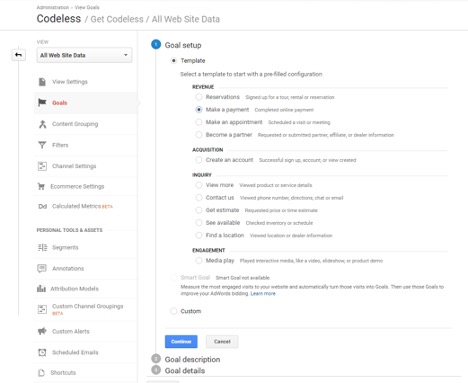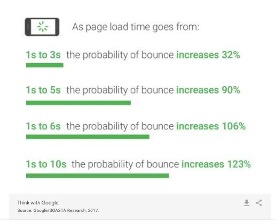In an ever-changing digital marketing landscape, there is no universally easy way to ensure success. Indeed, search engine algorithms change, which directly impacts Search Engine Optimization (SEO) best practices. Information becomes outdated, trends emerge and dissipate, and customer perceptions and expectations shift. In that regard, too, landing pages don’t exist in a vacuum; rather, they’re informed by all such changes. Therefore, adhering to landing page best practices aside, it is crucial to know when it’s time to update your landing page. While this subject is relatively simple at its core, it does warrant a more profound exploration than scheduling indiscriminate updates. First and foremost, let us briefly touch on the fundamentals. Marketing beginners may not fully grasp landing pages, so a definition should be an appropriate starting point. In essence, a landing page is where visitors “land” after clicking on promotional links or advertisements of any kind. Therefore, landing pages have a clear marketing function; to present visitors with a specific call to action (CTA). They’re thus not the entry point to the sales funnel but the intermediary point that leads to conversions. However, this function aside, the precise definition of landing pages will differ. Some websites define landing pages as having only a single call-to-action and little to no navigation. However, others may defer from this definition, opting to include website navigation and conclude with a CTA. Conversely, others may include multiple CTAs on the same page. But in all cases, a landing page will primarily seek to drive conversions and, ultimately, sales. It is a page that will bring revenue, by definition, regardless of how it approaches this goal. Finally, what follows this definition is that landing pages are a crucial instrument of digital marketing. What’s more, as they hinge on visibility, they directly overlap with SEO. As such, it’s imperative to know when it’s time to update your landing page. Especially in the case of informative landing pages, timely updates and optimizations can ensure they deliver value to visitors and enhance SEO signals. On that subject, let us briefly argue how SEO overlaps with landing pages. SEO, as the name suggests, is a series of practices that optimizes content to rank higher in search engines. To do so, it adheres to Google’s ranking factors, which include, among over 200 others: To focus on specific elements with more accuracy, SEO is then divided into types. While some will identify multiple types, the primary 3 are arguably the following: For deeper insights into this division, Mike Khorev offers an excellent visualization: In the context of this article, then, all 3 are crucial. Indeed, landing pages, like all pages, require a solid foundation to perform best. For example, an excellent link-building strategy will increase PA, while technical SEO will ensure security. In turn, both will increase visitors’ confidence and produce better engagement signals, increasing the likelihood of conversions in the process. However, it is arguably on-page SEO that interests landing page optimization the most. It is the on-page elements that will inform engagement and conversions, from loading speeds that impact bounce rates to content layout that dictates CTA visibility. Thus, having ensured the fundamentals, on-page SEO offers clear indications that it may be time to update your landing page. Finally, having contextualized landing pages in this way, let us explore 3 common signs that an update may be due. Perhaps the plainest, most visible sign that a landing page may need an update is decreased conversion rates. Here, much like how we’ve noted in the beginning, Google Analytics identifies different conversion types. Namely: Moreover, it divides them into 4 main groups: In all cases, Google Analytics and similar analytics tools like Usermaven can quickly identify drops in conversion rates. With precise insights in hand, you may thus consider updating your landing pages accordingly. For example, if you find you’re not getting enough “micro” engagement conversions, you may revisit your media. Conversely, if you find you’re not getting enough “macro” transaction conversions, you may need to examine your CTAs. To do so, you may consider such tools as heatmaps to identify exact on-page issues. Heatmaps can offer accurate information on user on-page activity, from how far they scroll to where their mouse hovers. This information may inform your choices; move, click, and touch heatmaps may reveal that your CTAs don’t attract your visitors. This may be due to clutter, CTA button colors, fonts, and copy, content layout, or other factors. Conversely, scroll heatmaps may reveal that your content doesn’t allure visitors to keep reading. In that case, you may need to focus more above the fold or provide more content value – as on-page SEO dictates. On the subject of SEO, it is worth remembering that landing pages are still pages that intend to offer value. Therefore, you may identify decreased engagement signals such as the following: These are clear-cut on-page SEO metrics that you may wish to remedy. Even in the case of outdated, campaign-specific landing pages, these signals matter in the context of your website. Thus, after identifying them through analytics tools or SEO audits, you may begin to address them accordingly. The most common reason for bounce rates is, famously, page loading times. Google itself has highlighted this in no uncertain terms: Therefore, you may begin to apply standard optimization practices to reduce loading times, including:
Page loading times aside, bounce rates and time on page overlap in one simple, core factor; immediate value. Internet users have become increasingly cautious with their time and will frequently leave a page that doesn’t immediately present value. Should you find that users don’t spend enough time on page to reach your CTAs, you may try the following:
Similarly, many of the practices mentioned above may help ensure your visitors scroll further down and reach your CTAs. In addition to the above, however, you may also consider the following to specifically encourage visitors to continue scrolling; Of course, exact interventions should always depend on your website, pages and your own Finally, SEO aside, competitor analysis may simply reveal that an update may be needed to edge ahead of your competitors. In this regard, there are two types of competition to consider; copycats and honest competitors. Both can siphon away your customers, so identifying them will signify it’s time to update your landing page. Copycats are not uncommon, and typically it only takes a plagiarism detector to identify them. Still, besides having them remove your content from their website, they too can signify the need to update yours. Honest competitors offer healthy competition by simply drawing from your strategies and adding value to them. In that case, the typical course of action is to do the same; analyze their strategies’ effectiveness and expand on them. To do so, you may consider such practices and factors as:
To summarize, there are many signs, clear and subtle, that may indicate a landing page update is due. From conversion rates decreasing over time to diminishing engagement signals, such signs are data-driven and thus safe to act on. Similarly, stiff competition may necessitate landing page updates to maintain your position in an increasingly competitive digital market. Fortunately, many tools can inform such updates, from analytics tools and heatmaps to SEO audits and competitor analyses. About the author Michael Young is an NYC-based digital marketer and freelance web designer who works for Digital Dot New York. He frequently authors articles related to SEO, PPC marketing, SEM, and web design to various websites. In his free time he enjoys binge-watching classic series and sharing time with his two dogs.What are landing pages?
How do SEO and landing pages overlap?

How to know when it’s time to update your landing page
#1 Decreased conversion rates

#2 Decreased engagement signals
Bounce rates

Time on page
Scrolling down
#3 Steep competition
Conclusion
Don’t forget to share this article


